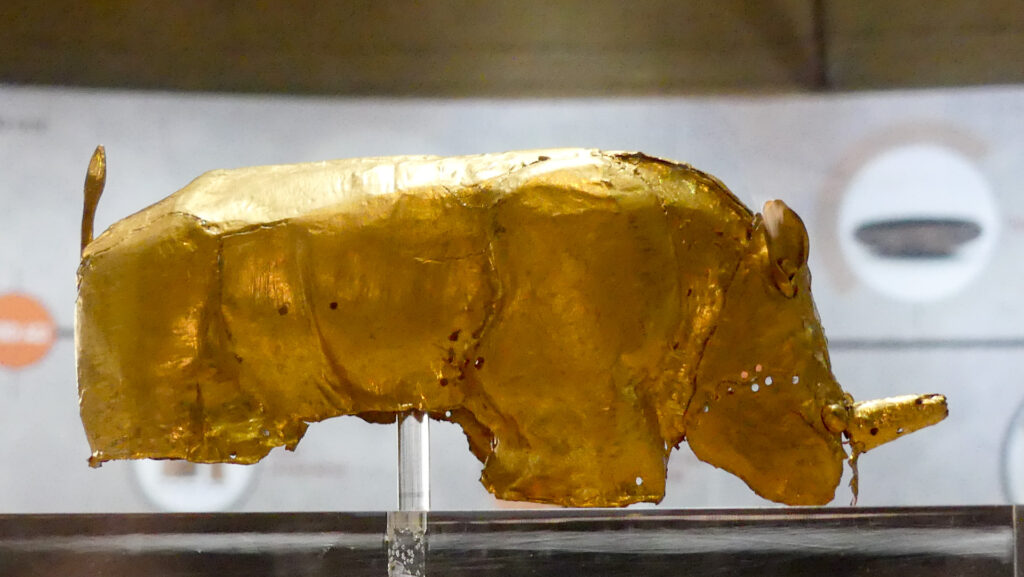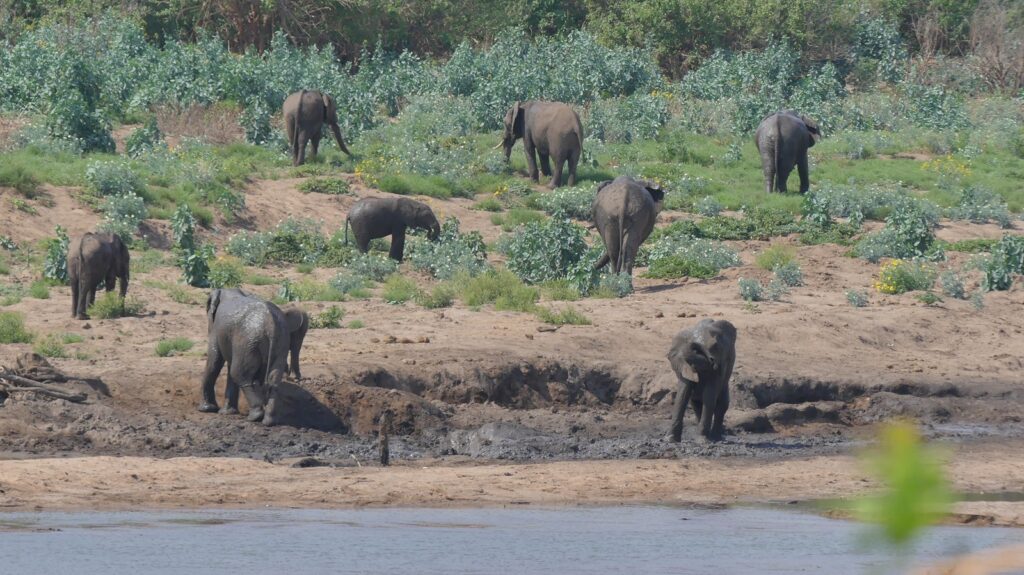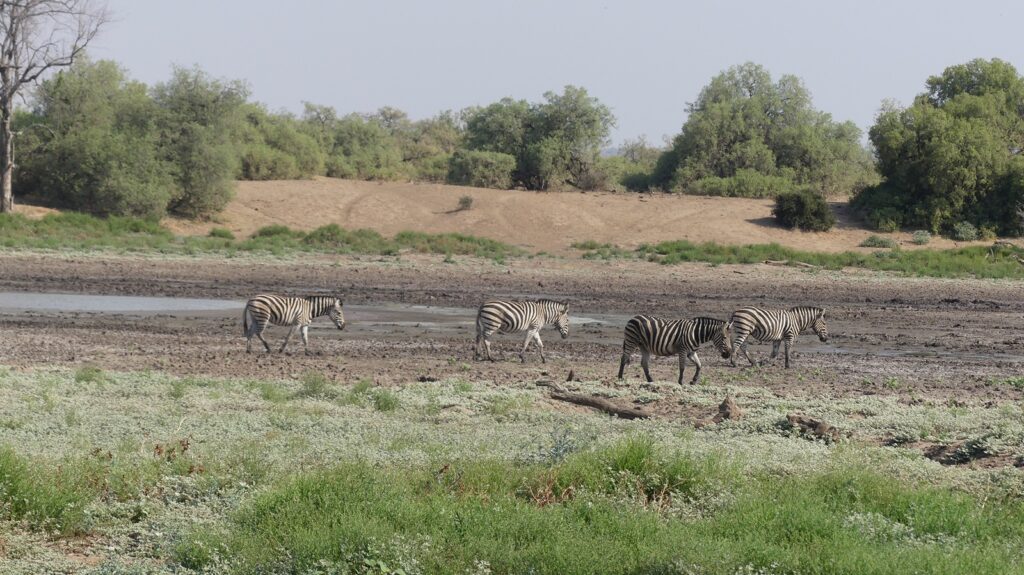Das heutige UNESCO Weltkulturerbe Mapungubwe in den Tälern des Limpopo war einst die Hauptstadt eines blühenden Staates mit einem von mehr als 200 kleinen Dörfern umgebenen Königssitz. Dieses frühe Königsreich florierte zwischen 1050 bis 1270 und betrieb regen Handel mit China, Indien und Ägypten. Also ungefähr zu der Zeit, als Europa im dunklen Mittelalter gegen einen wütenden Dschingis Khan kämpfte.
Als Archäologen die Geschichte dieser frühen Zivilisation zusammenpuzzelten, fanden sie menschliche Skelette, die sitzend oder in fötaler Position beerdigt waren, aber auch die Grabbeigaben der königlichen Familie mit großen Mengen an Perlen und Gold. Das wertvollste Fundstück aus dieser Zeit, eine kleine goldene Nashornfigur, ist leider in Pretoria unter Verschluss.
Es gibt Belege dafür, dass eine Mini-Eiszeit die Region heimsuchte und alle Ressourcen zunichtemachte, was schließlich zum Untergang des Königreiches führte. Kurz nach dem Niedergang von Mapungubwe begann die Blütezeit des Reiches Zimbabwe nordöstlich von hier (s. Zimbabwe Ruins in unserem Blog vom Herbst 2023).
Dieses Stück afrikanischer Geschichte ist weitgehend unbekannt, auch weil die Entdeckungen in die Zeit der Apartheid fielen und mit den rassistischen Weltbildern der Weißen damals (und bei vielen auch heute noch) nicht vereinbar waren.




Today’s UNESCO World Heritage Site, Mapungubwe, located in the valleys of the Limpopo, was once the capital of a thriving state surrounded by over 200 small villages. This early kingdom flourished between 1050 and 1270 and engaged in active trade with China, India, and Egypt—around the same time that Europe was battling a raging Genghis Khan during the dark Middle Ages. As archaeologists pieced together the history of this early civilization, they discovered human skeletons buried in sitting or fetal positions, as well as grave goods of the royal family, including large quantities of beads and gold. Unfortunately, the most valuable artifact from this period, a small golden rhino figure, is currently locked away in Pretoria.
There is evidence that a mini ice age devastated the region, destroying all resources and ultimately leading to the kingdom’s downfall. Shortly after the decline of Mapungubwe, the flourishing of the Kingdom of Zimbabwe began northeast of here (see Zimbabwe Ruins in our blog from autumn 2023).
This piece of African history remains largely unknown, partly because the discoveries occurred during the apartheid era and were incompatible with the racist worldviews of the white population at the time (and for many, still today).
Schreibe einen Kommentar